- Clone
- 29F.1A12 (See other available formats)
- Regulatory Status
- RUO
- Other Names
- PD-1, Programmed Death-1, PDCD1
- Isotype
- Rat IgG2a, κ
- Ave. Rating
- Submit a Review
- Product Citations
- publications
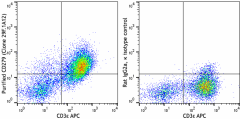
-

Con A and IL-2 stimulated mouse splenocytes (day 3) were stained with CD3ε APC and purified CD279 (clone 29F.1A12, left) or rat IgG2a, κ isotype control (right) followed by FITC anti-rat IgG.
Select size of product is eligible for a 40% discount! Promotion valid until December 31, 2024. Exclusions apply. To view full promotion terms and conditions or to contact your local BioLegend representative to receive a quote, visit our webpage.
CD279, also known as programmed death-1 (PD-1), is a 50-55 kD glycoprotein belonging to the CD28 family of the Ig superfamily. PD-1 is expressed on activated splenic T and B cells and thymocytes. It is induced on activated myeloid cells as well. PD-1 is involved in lymphocyte clonal selection and peripheral tolerance through binding its ligands, B7-H1 (PD-L1) and B7-DC (PD-L2). It has been reported that PD-1 and PD-L1 interactions are critical to positive selection and play a role in shaping the T cell repertoire. PD-L1 negative costimulation is essential for prolonged survival of intratesticular islet allografts.
Product DetailsProduct Details
- Verified Reactivity
- Mouse
- Antibody Type
- Monoclonal
- Host Species
- Rat
- Immunogen
- PD-1 cDNA followed by PD-1-Ig fusion protein
- Formulation
- 0.2 µm filtered in phosphate-buffered solution, pH 7.2, containing no preservative.
- Endotoxin Level
- Less than 0.01 EU/µg of the protein (< 0.001 ng/µg of the protein) as determined by the LAL test.
- Preparation
- The Ultra-LEAF™ (Low Endotoxin, Azide-Free) antibody was purified by affinity chromatography.
- Concentration
- The antibody is bottled at the concentration indicated on the vial, typically between 2 mg/mL and 3 mg/mL. Older lots may have also been bottled at 1 mg/mL. To obtain lot-specific concentration and expiration, please enter the lot number in our Certificate of Analysis online tool.
- Storage & Handling
- The antibody solution should be stored undiluted between 2°C and 8°C.
- Application
-
FC - Quality tested
IHC-F, Block - Reported in the literature, not verified in house - Recommended Usage
-
Each lot of this antibody is quality control tested by immunofluorescent staining with flow cytometric analysis. For flow cytometric staining, the suggested use of this reagent is ≤ 0.06 µg per million cells in 100 µl volume. It is recommended that the reagent be titrated for optimal performance for each application.
- Application Notes
-
Additional reported applications (for the relevant formats) include: immunohistochemical staining of acetone-fixed frozen tissue3, in vivo blocking of PD-1 binding to its ligands2,3, and spatial biology (IBEX)5,6.
-
Application References
(PubMed link indicates BioLegend citation) -
- Good-Jacobson KL, et al. 2010. Nat. Immunol. 11:535. (FC) PubMed
- Lázár-Molnár E, et al. 2008. Proc. Natl. Acad. Sci. USA 105:2658. (Block)
- Liang SC, et al. 2003. Eur. J. Immunol. 33:2706. (FC, IHC, Block)
- Tobias J, et al. 2020. Front Immunol. 11:895 (FC, ELISA) PubMed
- Radtke AJ, et al. 2020. Proc Natl Acad Sci U S A. 117:33455-65. (SB) PubMed
- Radtke AJ, et al. 2022. Nat Protoc. 17:378-401. (SB) PubMed
- Product Citations
-
- RRID
-
AB_2783090 (BioLegend Cat. No. 135248)
AB_2783090 (BioLegend Cat. No. 135249)
AB_2783090 (BioLegend Cat. No. 135250)
AB_2783090 (BioLegend Cat. No. 135245)
AB_2783090 (BioLegend Cat. No. 135246)
AB_2783090 (BioLegend Cat. No. 135247)
Antigen Details
- Structure
- A 50-55 kD glycoprotein belonging to the CD28 family of the Ig superfamily.
- Distribution
-
Induced on splenic T and B lymphocytes, thymocytes, and myeloid cells after stimulation.
- Function
- Involved in lymphocyte clonal selection and peripheral tolerance, prolonged survival of allografts.
- Ligand/Receptor
- B7-H1 (PD-L1) and B7-DC (PD-L2)
- Cell Type
- B cells, T cells
- Biology Area
- Cancer Biomarkers, Immunology, Inhibitory Molecules
- Molecular Family
- CD Molecules, Immune Checkpoint Receptors
- Antigen References
-
1. Nishimura H, et al. 2001. Science 291:319
2. Agata Y, et al. 1996. Int. Immunol. 8:765
3. Liang SC, et al. 2003. Eur. J. Immunol. 33:2706
4. Barber DL, et al. 2006. Nature 439:682
5. Keir ME, et al. 2005. J. Immunol. 175:7372
6. Koehn BH. et al. 2008. J Immunol. 181:5313 - Gene ID
- 18566 View all products for this Gene ID
- Specificity (DOES NOT SHOW ON TDS):
- CD279
- Specificity Alt (DOES NOT SHOW ON TDS):
- PD-1
- App Abbreviation (DOES NOT SHOW ON TDS):
- FC,IHC-F,Block
- UniProt
- View information about CD279 on UniProt.org
Related FAQs
- Do you guarantee that your antibodies are totally pathogen free?
-
BioLegend does not test for pathogens in-house aside from the GoInVivo™ product line. However, upon request, this can be tested on a custom basis with an outside, independent laboratory.
- Does BioLegend test each Ultra-LEAF™ antibody by functional assay?
-
No, BioLegend does not test Ultra-LEAF™ antibodies by functional assays unless otherwise indicated. Due to the possible complexities and variations of uses of biofunctional antibodies in different assays and because of the large product portfolio, BioLegend does not currently perform functional assays as a routine QC for the antibodies. However, we do provide references in which the antibodies were used for functional assays and we do perform QC to verify the specificity and quality of the antibody based on our strict specification criteria.
- Does BioLegend test each Ultra-LEAF™ antibody for potential pathogens?
-
No, BioLegend does not test for pathogens in-house unless otherwise indicated. However, we can recommend an outside vendor to perform this testing as needed.
- Have you tested this Ultra-LEAF™ antibody for in vivo or in vitro applications?
-
We don't test our antibodies for in vivo or in vitro applications unless otherwise indicated. Depending on the product, the TDS may describe literature supporting usage of a particular product for bioassay. It may be best to further consult the literature to find clone specific information.
Other Formats
View All PD-1 Reagents Request Custom ConjugationCustomers Also Purchased
Compare Data Across All Formats
This data display is provided for general comparisons between formats.
Your actual data may vary due to variations in samples, target cells, instruments and their settings, staining conditions, and other factors.
If you need assistance with selecting the best format contact our expert technical support team.
-
PE anti-mouse CD279 (PD-1)
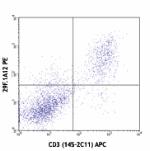
Con-A and IL-2 stimulated (3 days) C57BL/6 splenocytes stain... 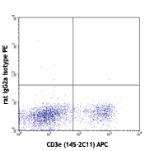
Con A stimulated (3 days) C57BL/6 splenocytes stained with r... -
Purified anti-mouse CD279 (PD-1)

Con A and IL-2 stimulated mouse splenocytes (day 3) were sta... 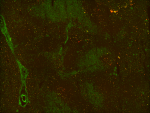
Fresh, frozen mouse spleen was stained with purified CD279 c... -
PerCP/Cyanine5.5 anti-mouse CD279 (PD-1)

Con-A and IL-2 stimulated C57BL/6 splenocytes (3 days) stain... -
APC anti-mouse CD279 (PD-1)
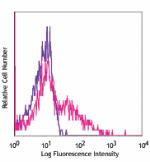
Con-A and IL-2 stimulated C57BL/6 splenocytes (3 days) stain... -
Biotin anti-mouse CD279 (PD-1)
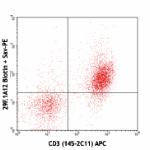
Con-A and IL-2 stimulated (3 days) C57BL/6 splenocytes stain... 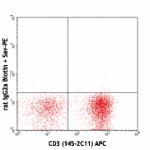
Con A-stimulated (3 days) C57BL/6 splenocytes stained with C... -
FITC anti-mouse CD279 (PD-1)
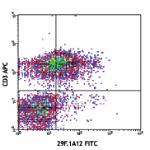
Con-A and IL-2 stimulated C57BL/6 mouse splenocytes (3 days)... 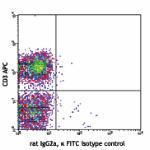
-
PE/Cyanine7 anti-mouse CD279 (PD-1)

Con-A and IL-2 stimulated (3 days) C57BL/6 mouse splenocytes... -
Brilliant Violet 421™ anti-mouse CD279 (PD-1)

Con-A and IL-2 stimulated C57BL/6 splenocytes (3 days) were ... 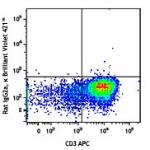

Mice were injected subcutaneously with sheep red blood cells... -
Brilliant Violet 605™ anti-mouse CD279 (PD-1)
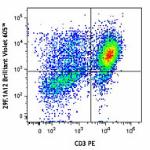
Con-A and IL-2 stimulated C57BL/6 splenocytes (3 days) were ... -
APC/Cyanine7 anti-mouse CD279 (PD-1)

Con-A and IL-2 stimulated splenocytes (3 days) were stained ... -
Brilliant Violet 785™ anti-mouse CD279 (PD-1)
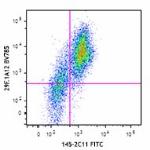
Con-A and IL-2 stimulated C57BL/6 splenocytes (3 days) were ... 
-
PE/Dazzle™ 594 anti-mouse CD279 (PD-1)
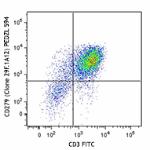
Con-A and IL-2 stimulated C57BL/6 splenocytes (three days) w... 
-
Alexa Fluor® 647 anti-mouse CD279 (PD-1)

Con A and IL-2 stimulated C57BL/6 splenocytes (three days) w... 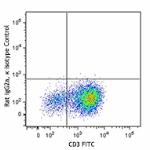
-
Brilliant Violet 711™ anti-mouse CD279 (PD-1)
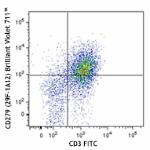
Con-A and IL-2 stimulated C57BL/6 splenocytes (three days) w... 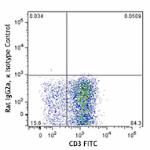
-
GoInVivo™ Purified anti-mouse CD279 (PD-1)
-
APC/Fire™ 750 anti-mouse CD279 (PD-1)
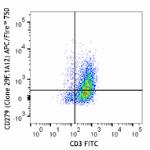
Con-A and IL-2 stimulated C57BL/6 mouse splenocytes (3 days)... 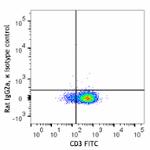
-
Brilliant Violet 510™ anti-mouse CD279 (PD-1)
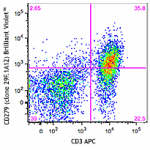
Con-A and IL-2 stimulated C57BL/6 mouse splenocytes (3 days)... 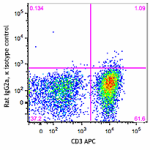
-
Ultra-LEAF™ Purified anti-mouse CD279 (PD-1)

Con A and IL-2 stimulated mouse splenocytes (day 3) were sta... -
APC/Fire™ 810 anti-mouse CD279 (PD-1) Antibody

Con-A and IL-2 stimulated C57BL/6 splenocytes (three days) w... -
PE/Fire™ 810 anti-mouse CD279 (PD-1) Antibody

Con-A and IL-2 stimulated C57BL/6 mouse splenocytes (three d... -
PE/Cyanine5 anti-mouse CD279 (PD-1)

Con-A and IL-2 stimulated C57BL/6 splenocytes (3 days) were ... -
PE/Fire™ 640 anti-mouse CD279 (PD-1)

C57BL/6 mouse splenocytes were stimulated with Con-A and IL-... -
Spark Red™ 718 anti-mouse CD279 (PD-1)

Con-A and IL-2 stimulated C57 splenocytes (3 days) were stai... -
PerCP/Fire™ 806 anti-mouse CD279 (PD-1)

Con-A and IL-2 stimulated C57BL/6 splenocytes (three days) w... -
Brilliant Violet 750™ anti-mouse CD279 (PD-1)

Con-A and IL-2 stimulated C57BL/6 splenocytes (3 days) stain... -
PerCP/Fire™ 780 anti-mouse CD279 (PD-1)

Con-A and IL-2 stimulated C57BL/6 splenocytes (three days) w... -
PE/Fire™ 700 anti-mouse CD279 (PD-1)

Unstimulated BALB/c splenocytes were stained with anti-mouse... 
Con A and IL-2 stimulated BALB/c splenocytes (three days) we... -
Brilliant Violet 650™ anti-mouse CD279 (PD-1)

Con-A and IL-2 stimulated C57BL/6 mouse splenocytes (3 days)... -
Spark Blue™ 574 anti-mouse CD279 (PD-1) (Flexi-Fluor™)
-
Spark PLUS B550™ anti-mouse CD279 (PD-1)

Con A+IL-2 stimulated BALB/c splenocytes (3 days) were stain...
 Login / Register
Login / Register 







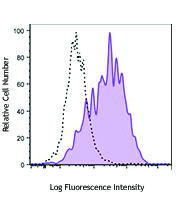
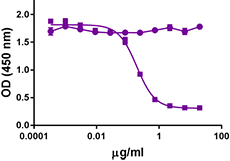
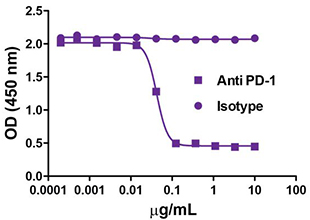



Follow Us